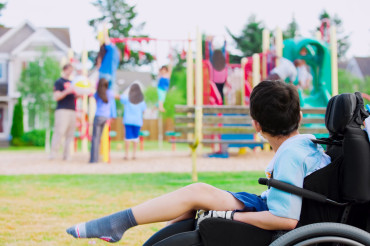Understanding The Issues Surrounding The Diagnosis Of Cerebral Palsy

Cerebral palsy, also known as CP, is a group of disorders that affect a person’s ability to move and maintain balance and posture. It is the most common type of motor disability in children.
Cerebral means that it’s related to the brain, while palsy refers to the weakness in the muscles that the disorder causes. Cerebral palsy is caused by abnormal brain development or damage to the child’s brain during development.
Unfortunately, cerebral palsy is a difficult disorder to diagnosis, which means the short answer for, at what age is cerebral palsy diagnosed, is several ages.
There are clues more than there are symptoms. Identifying those clues is vital, as the earlier the diagnosis, the better the outcome. Let’s look at some of the earliest warning signs first.
What Are Some Early Signs Of Cerebral Palsy?
There are three types of cerebral palsy:
- Spastic – meaning the muscles are weak and/or stiff
- Dyskinetic – defined by uncontrolled movements
- Ataxic – involves mostly poor coordination
There is also a mixed cerebral palsy designation for those children who have more than one type. Spastic-dyskinetic is the most common type of mixed CP.
Because there are so many types and so many levels to the disorder, warning signs in children with cerebral palsy can vary wildly. However, the biggest sign that your child may have CP is that he or she isn’t reaching motor function milestones – rolling over, sitting, standing, walking – as quickly as other children.
The warning signs for cerebral palsy also tend to change over time. Here are the early warning signs in children younger than six months, between six and 10 months, and older than 10 months.
What Are The Early Warning Signs For Cerebral Palsy In Children Younger Than Six Months?
The most common signs of cerebral palsy in children under six months include:
- The child’s head and body appear floppy when picked up
- The child’s body feels stiff
- The child is constantly extending his or her neck and back
- The child’s legs are beginning to cross or scissor
What Are The Early Warning Signs For Cerebral Palsy In Children Between Six And 10 Months?
In children between six and 10 months, early warning signs include:
- The child has trouble rolling over
- The child cannot bring his or her hands together
- The child has trouble bringing hands to mouth
- One hand tends to remain fisted while the child reaches out with the other
What Are The Early Warning Signs For Cerebral Palsy In Children Older Than 10 Months?
Some common warning signs of CP in children over 10 months include:
- The child cannot crawl or crawls lopsided
- The child scoots around on his or her buttocks or knees instead of crawling
How Is Cerebral Palsy Diagnosed?
Early diagnosis is critical for managing the disorder and involves the following three steps:
- Developmental Monitoring – also known as surveillance, this is when the parents track the development or their infant’s growth. Becoming more aware is key. If any concerns come up during this phase, then proceed to step two.
- Developmental Screening – screening involves testing for specific developmental delays such as those that control motor and movement. If those test results produce any cause for concern, then families should proceed to step three.
- Developmental and Medical Evaluation – this is where doctors will begin to test and diagnose for specific types and severity of the disorder.
Is There A Cure For Cerebral Palsy?
At this time, sadly there is no cure for cerebral palsy. However, with a quick diagnosis, a well-thought out and executed treatment plan can greatly improve the child’s quality of life.
After a cerebral palsy diagnosis is made, the team of medical professionals working with the family will devise a treatment plan and put it into place. This course of treatment will be designed to allow the child to reach his or her full potential.
The types of treatment can vary greatly, just as do the types of cerebral palsy. In general, treatment can include any combination of medication, surgery, the use of braces, and physical, occupational, and speech therapy.
What Should I Do If I Suspect Medical Malpractice Contributed To My Child’s Cerebral Palsy?
If you suspect medical malpractice caused or worsened your child’s cerebral palsy, the experienced attorneys at Ross Feller Casey can help you.
Ross Feller Casey has an outstanding record of winning multimillion-dollar recoveries in all types of medical malpractice lawsuits, including for cerebral palsy related cases. We have a team of Ivy League trained physicians on our staff who are also lawyers, and always ready to assist on cerebral palsy cases. Contact the leading medical malpractice lawyers at Ross Feller Casey now for a free case evaluation.
Disclaimer: Ross Feller Casey, LLP provides legal advice only after an attorney-client relationship is formed. Our website is an introduction to the firm and does not create a relationship between our attorneys and clients. An attorney-client relationship is formed only after a written agreement is signed by the client and the firm. Because every case is unique, the description of awards and summary of cases successfully handled are not intended to imply or guarantee that same success in other cases. Ross Feller Casey, LLP represents catastrophically injured persons and their families in injury and wrongful death cases, providing legal representation in Pennsylvania and New Jersey.





